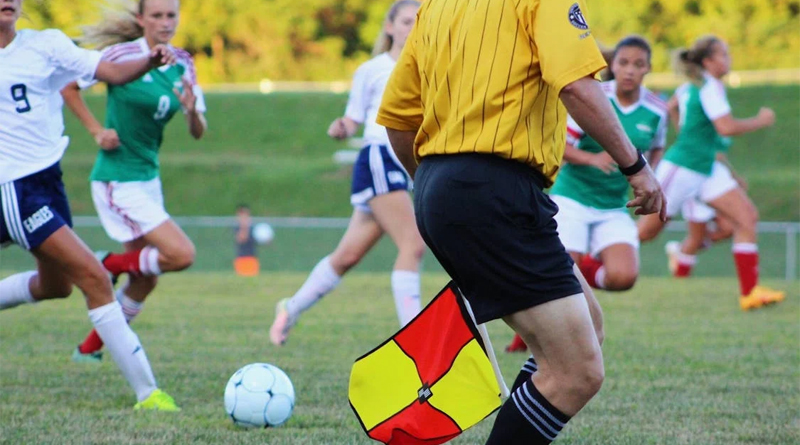FEMALE FOOTBALLERS BEING FAILED BY FOOTWEAR
Injury to the Anterior Cruciate Ligament (ACL)—the main knee stabilising ligament—caused 37 players from various nations to miss the Women’s World Cup in 2023. It’s a serious injury and it is becoming something of an epidemic in the women’s game. Female footballers are six times more likely to suffer ACL injuries compared to men, and 25 per cent less likely to return after recovery.
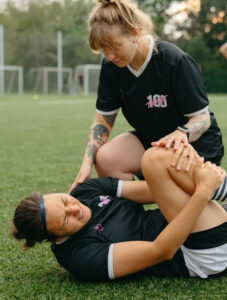
Anatomical, biomechanical, hormonal, and training factors play a part in women having a greater risk of ACL injury, as does footwear. Poorly fitted football boots—that are not designed with a woman’s foot, gait, or body in mind—are a problem.
Feet
Most boots are designed for men or are what brands call ‘unisex’ or ‘gender neutral’. However, there are many differences between the male and female foot. On average, men have larger and wider feet compared to women, while women tend to have higher arches, and female toes are often longer in proportion to their feet compared to men. Typically, a woman will have a lower foot volume, meaning her feet are less bulky even if they are of the same length as a man’s foot, and women have a narrower heel in relation to the forefoot, which can affect how their feet fit into shoes designed for the average male foot shape.
This means that footwear needs to be customised for female players; for best results, there needs to be a customised orthotic for each foot.
Orthotics
Custom-made or off-the-shelf, orthotics are designed to support, align, correct, or improve the function of the musculoskeletal system, particularly the feet, ankles, and legs. They are commonly used to alleviate pain, enhance mobility, and provide stability.
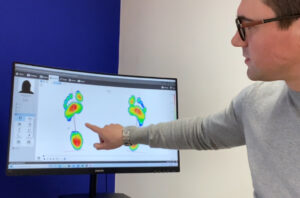
Although the solution starts with the feet, the answer is not a one-size-fits all, as there are multiple factors that contribute to the reasons a woman might suffer an ACL injury. This makes the problem more complex with a number of factors to consider.
Using a biomechanics approach, we can address and, if necessary, modify structural and postural factors to help a player avoid ACL (and other) injuries. Factors, such as the width of the pelvis (women generally have wider pelvises than men), or bow-leggedness all play a part, so we adapt and work around variations, assessing each of them to integrate the uniqueness of a player into their unique treatment plan.
Other factors such as a foot/ankle over-pronating, a knee rolling inwards or being pushed outward or pelvic tilting—all of which are among the most common sources of injuries—are addressed, from the ground up, by applying the rules of biomechanics, and crafting a pair of asymmetrical orthotics.
Since your two feet are different, and everyone has a dominant leg, there is a naturally occurring misalignment, or asymmetry. If you put your asymmetrical form into a pair of symmetrical football boots, it will inevitably put strain on your muscles, increasing your risk of injury. Therefore, it makes sense to match your asymmetry, in your symmetrical pair of football boots, with an asymmetrical pair of orthotics. These are not the orthotics that you can buy off-the-shelf, they must be custom made. PODO believes that this should become a preventive measure for every woman playing football.
Investment
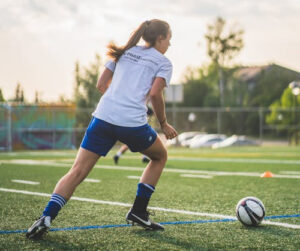 Custom orthotics might be as expensive as the boots themselves but they can save a player from ACL, rehab and, quite possibly, loss of career.
Custom orthotics might be as expensive as the boots themselves but they can save a player from ACL, rehab and, quite possibly, loss of career.
For custom orthotics to make a big difference, they should provide the following:
- A tough layer under the forefoot, because non-reinforced shoe-soles encourage a problematic twist and turn under the forefoot, increasing knee instability.
- Customised supports – the foot’s medial, lateral and, sometimes, transversal arches must all be supported, by moulding multiple thin layers directly onto the player’s foot. Because of the natural strength of the arch, and of both the intrinsic and extrinsic muscles, women will benefit a lot more from a thin support made to measure, particularly while going through hormonal changes.
- A custom-moulded narrower heel cup, because a wide and loose heel reduces the stability of the ankle and knee joints and reduces the engagement of the femur at a hip level.
At PODO, we are dedicating 2024 to helping women get the support their feet need. As part of our From the Ground Up campaign, we are calling on clubs and players to join us on our journey. We are convinced that an improvement in both women’s orthotics and women’s boots will make a massive contribution to reducing ACL injuries.
ABOUT THE AUTHOR
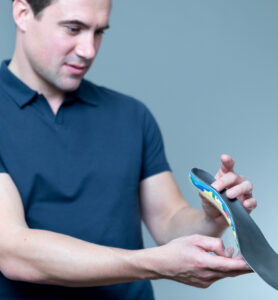 Christophe Champs is an expert in Biomechanics, and the founder of PODO Clinic and Workshop. Christophe works with patients to help correct postural and biomechanical issues that are causing pain or putting a client at risk of injury. By testing both the moving gait and the still posture Christophe can correct misalignment and asymmetry through creating custom-made orthotics to suit the exact needs of each individual’s needs.
Christophe Champs is an expert in Biomechanics, and the founder of PODO Clinic and Workshop. Christophe works with patients to help correct postural and biomechanical issues that are causing pain or putting a client at risk of injury. By testing both the moving gait and the still posture Christophe can correct misalignment and asymmetry through creating custom-made orthotics to suit the exact needs of each individual’s needs.
Web: podo.london
Instagram: podo.london
Facebook: podo.london
X/Twitter: PodoLondon
YouTube
LinkedIn: christophe-champs-podo

